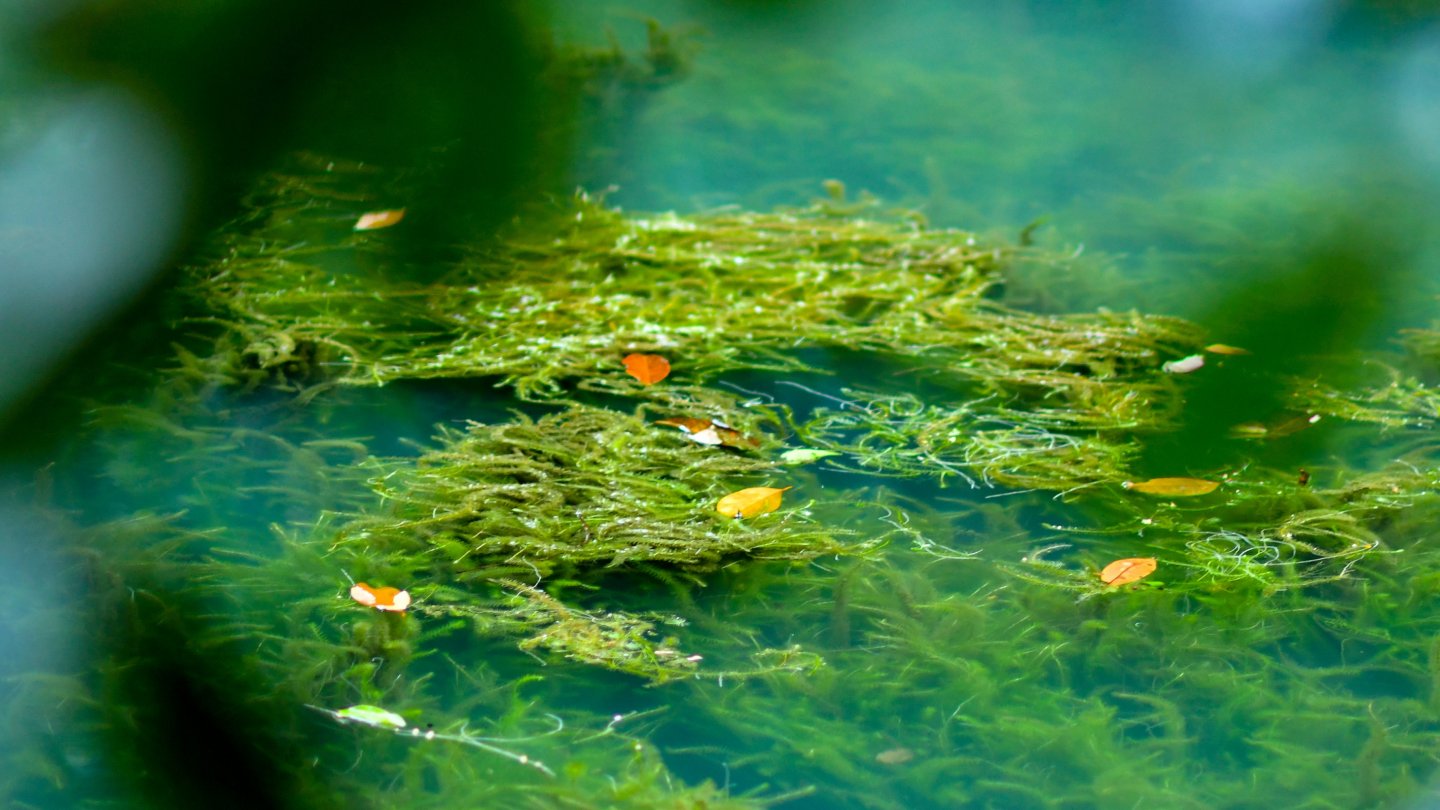Clear the Way: How Our Biologists Restore Retention Pond Health by Cutting and Removing Cattails
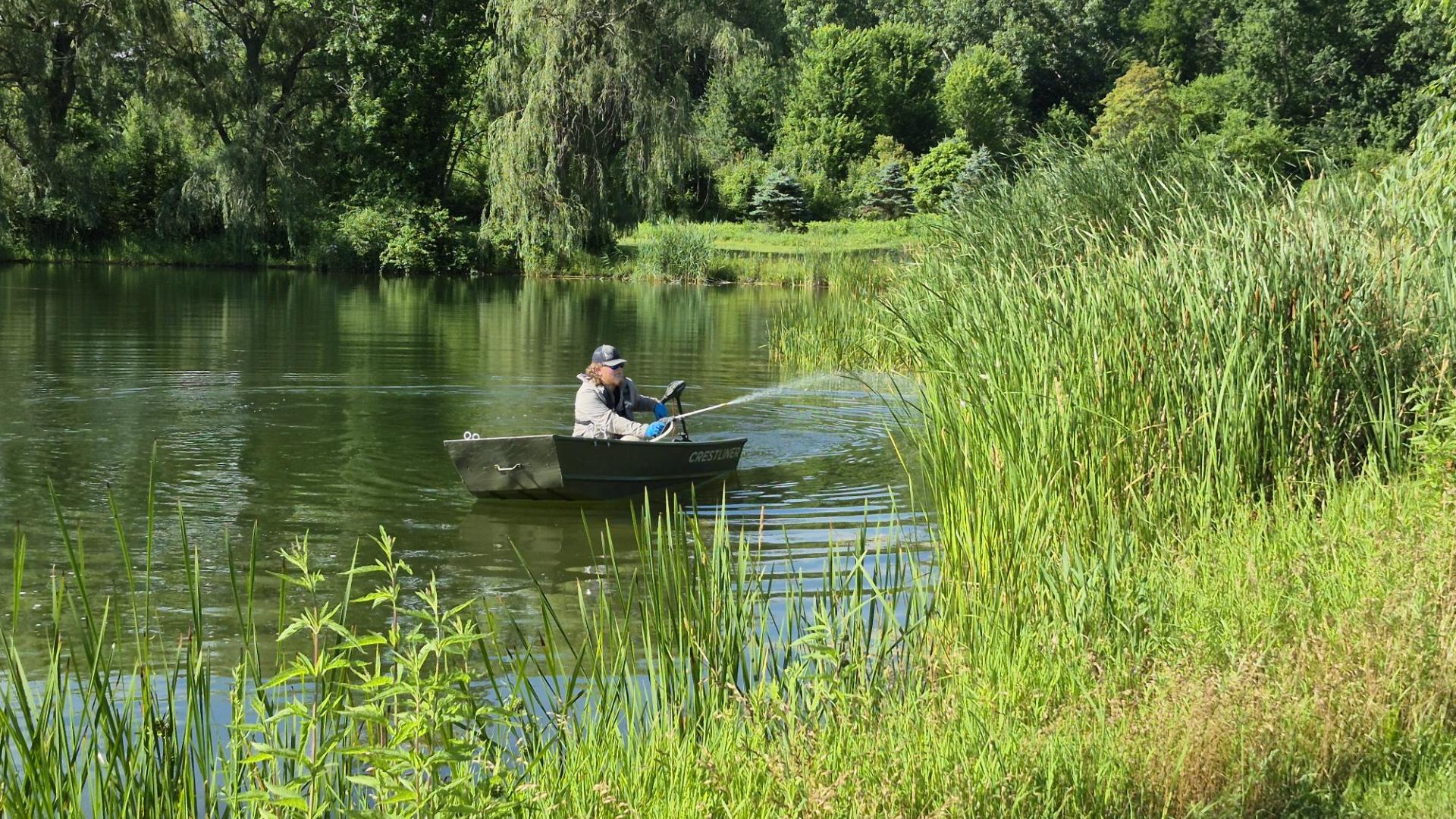
Retention ponds are more than just water features—they are living systems designed to manage stormwater, protect water quality, and provide recreational opportunities. But when invasive or hybrid cattails take over, these systems lose both their function and beauty. At Jones Lake Management, our biologists know that effective cattail control is not just about killing plants—it’s about restoring balance, improving water flow, and protecting your pond for the long term.
While small stands of native cattails can filter runoff and offer habitat for wildlife, unmanaged growth quickly turns into dense, impenetrable walls along the shoreline. These thick stands crowd out beneficial native vegetation, limit access to the water, and create conditions that can degrade your pond’s health.
The Problems Our Biologists See in Overgrown Cattails
When our team inspects a pond overrun with cattails, we often find more than just an eyesore. Dense cattail stands can:
- Reduce water circulation, trapping water in stagnant pockets that lose oxygen and increase in temperature.
- Limit a retention pond’s storage capacity, reducing its ability to handle stormwater.
- Impair water flow, slowing or blocking the natural flushing process.
- Lower water quality by encouraging algae growth, foul odors, and sediment buildup.
Over time, unchecked growth can even transform a diverse wetland into a single-species monoculture, eliminating the variety of habitats that support healthy ecosystems.
Learn more here.
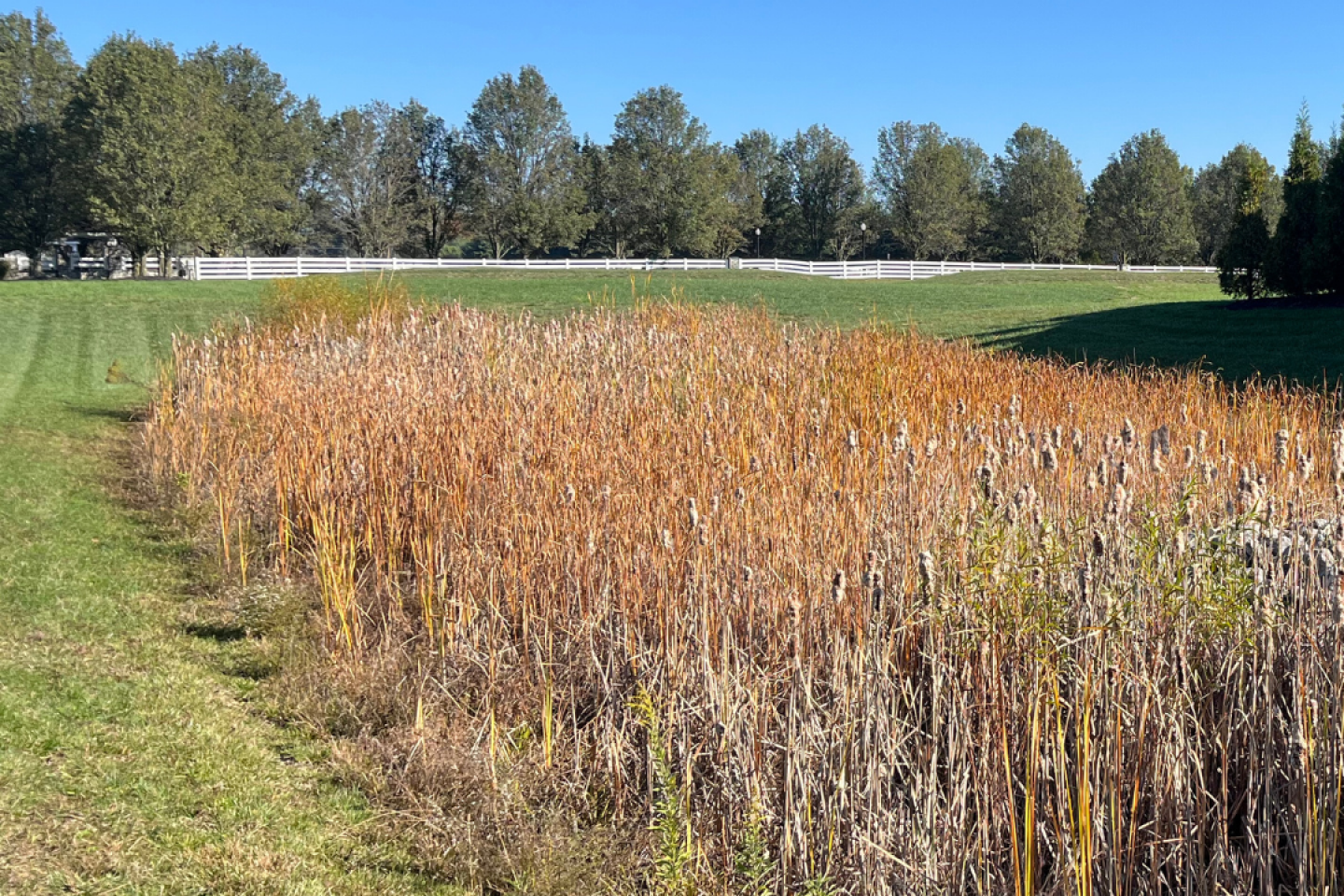
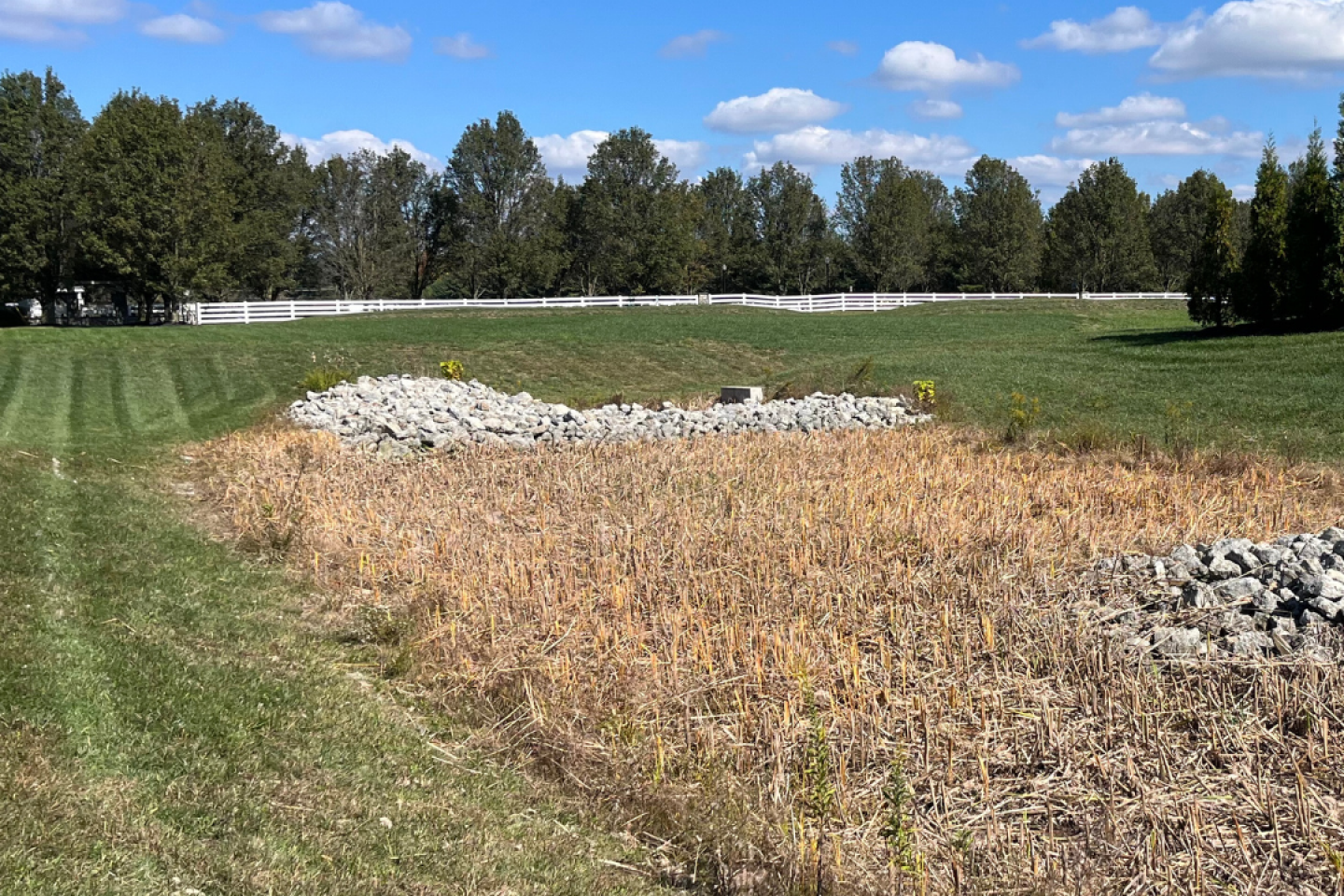
Our Science-Driven Approach to Cattail Control
Cattail management is a multi-step process that requires both technical expertise and environmental awareness. Our biologists are involved from start to finish, ensuring each step is tailored to your specific pond.
1. Assessment & Planning – We start by mapping cattail coverage, identifying growth patterns, and evaluating how they are impacting your pond’s circulation, storage, and shoreline access.
2. Targeted Herbicide Application – Using selective, systemic herbicides, our biologists treat cattails down to the root system while minimizing impact on non-target plants. Timing is critical—late summer treatments are most effective because cattails naturally transport nutrients to their roots, maximizing herbicide absorption.
3. Fall & Winter Cutting and Removal – Herbicides alone leave behind dead stalks that continue to block access and contribute to nutrient buildup. That’s why our biologists return with specialized cutting equipment in the fall or winter to remove the dead material at the waterline. All biomass is hauled away, reducing organic matter that would otherwise decompose and fuel algae growth.
4. Monitoring & Maintenance – We revisit the site to check for regrowth and take action before cattails can reclaim the shoreline.
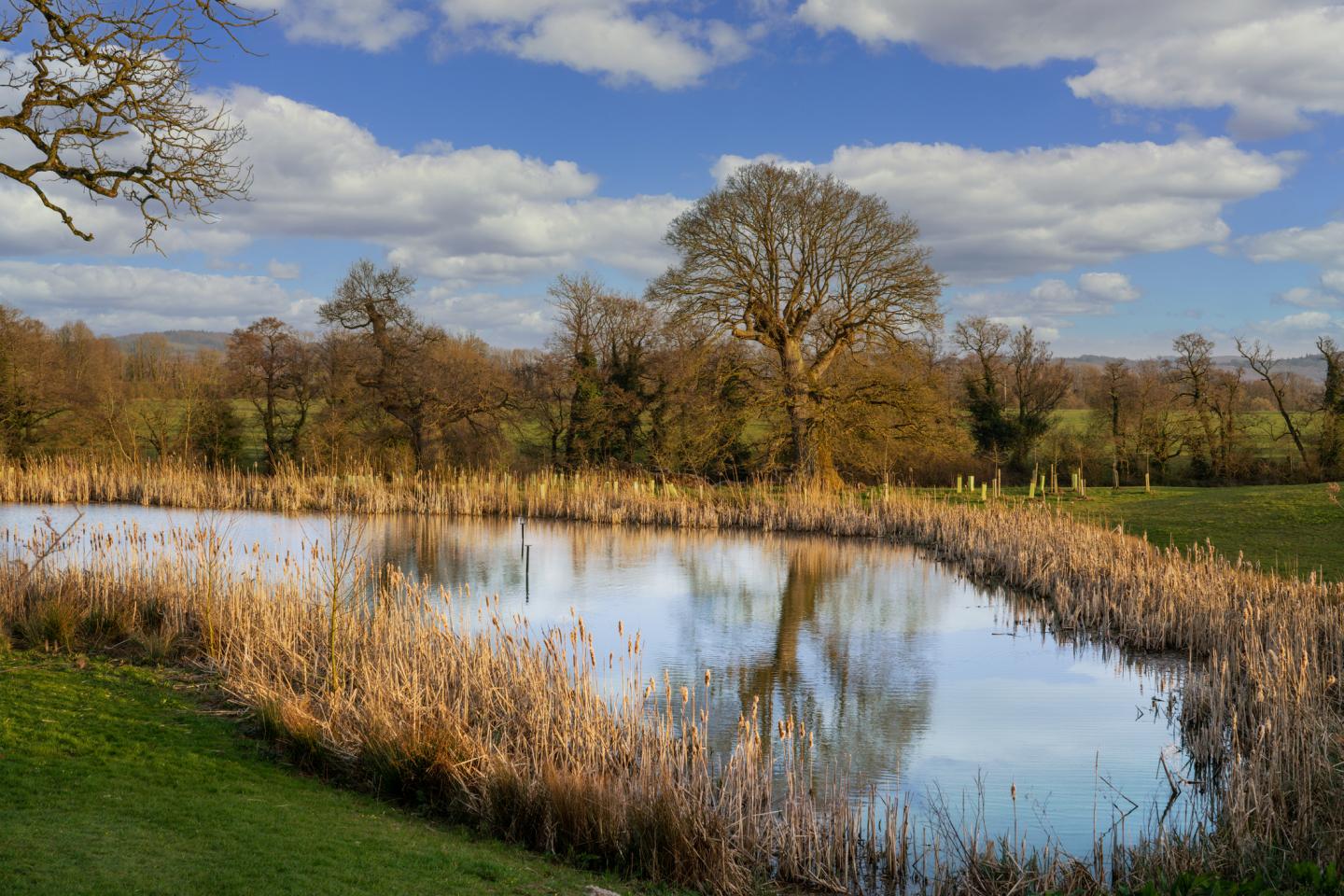
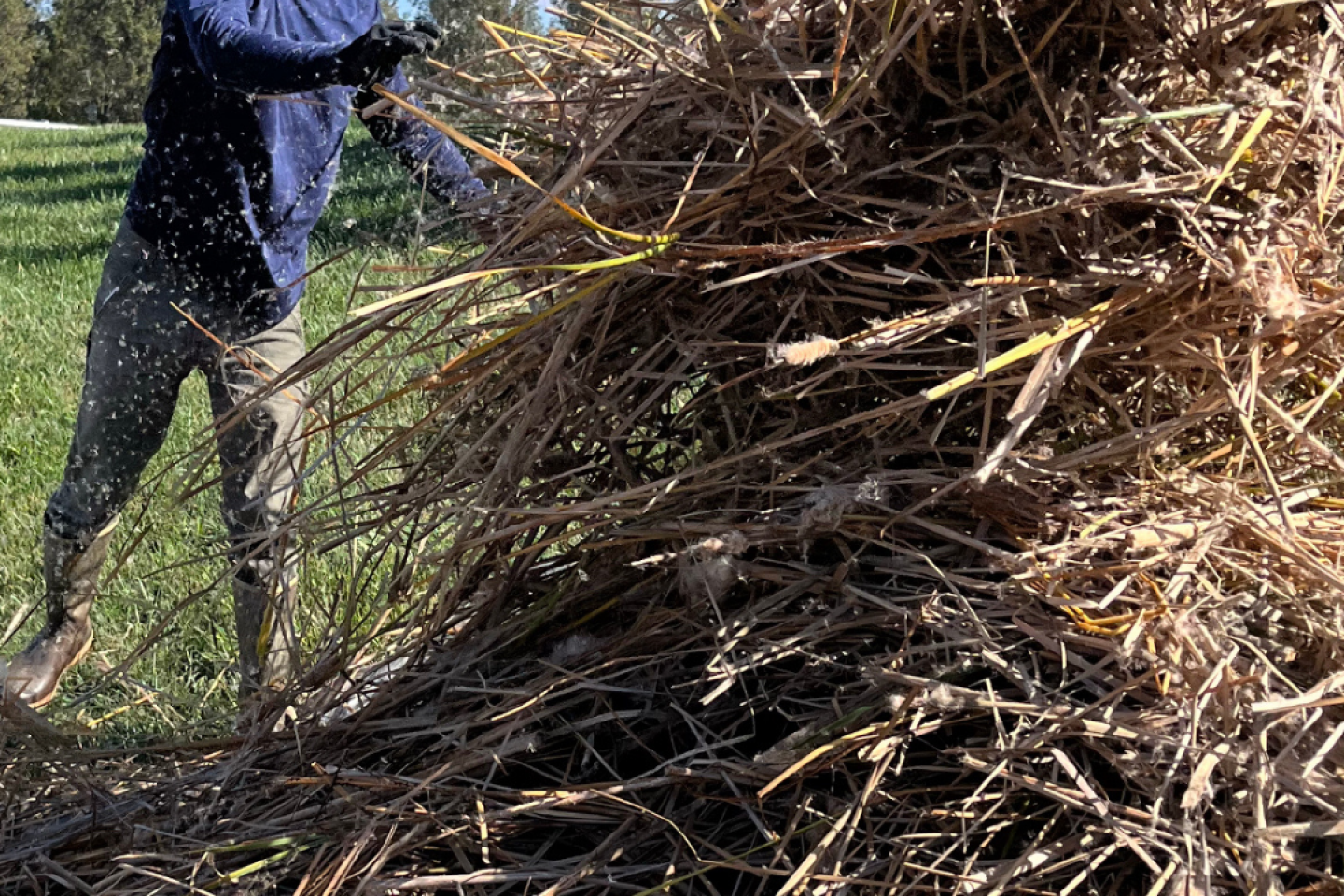
Why Cutting and Removal Are Essential
We see it all the time—pond owners treat cattails but skip the critical removal step, leaving the shoreline choked with brown stalks. Not only does this create an unappealing, overgrown look, but it also undermines the entire restoration effort. As those dead plants break down, the nutrients locked inside their stems and leaves are released back into the water, fueling the very nutrient cycle that promotes algae blooms, murky water, and further weed growth. By cutting and hauling away dead cattails, our team removes this nutrient source entirely, restoring open shorelines, improving water flow, and protecting your pond’s long-term health and functionality.
Restoring Your Pond’s Potential
Our biologists don’t take a one-size-fits-all approach. Every pond has its own set of challenges, and our science-driven process ensures the solution is as unique as your waterbody. We combine technical knowledge, hands-on fieldwork, and a commitment to long-term results so your pond can function as intended—handling stormwater, supporting healthy ecosystems, and offering clear, open shorelines for recreation.
If cattails are stealing your pond’s potential, our team is ready to help. Contact Jones Lake Management today for a free assessment and see how our biologists can restore both the beauty and the function of your retention pond.


